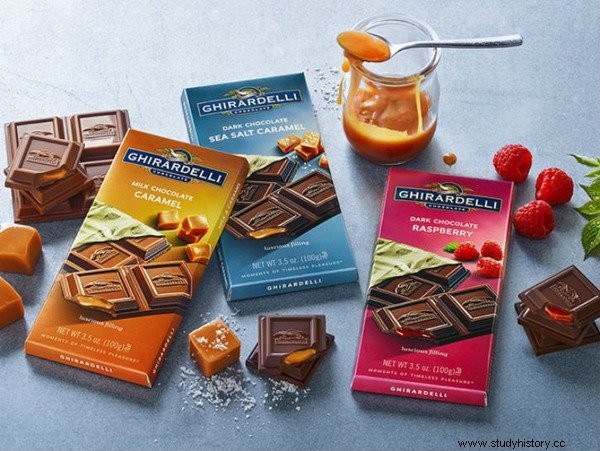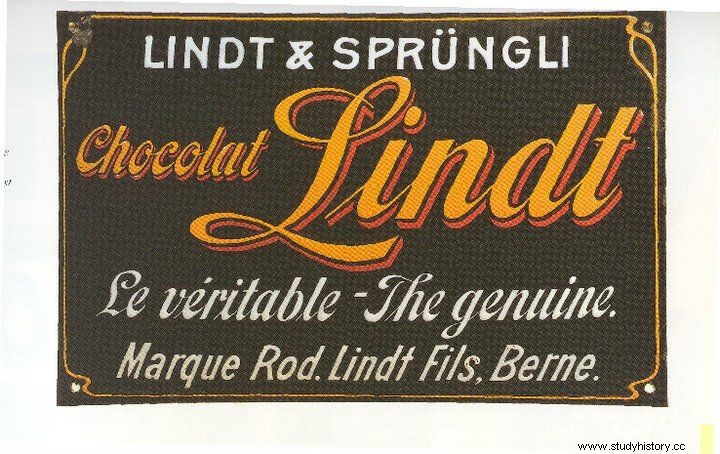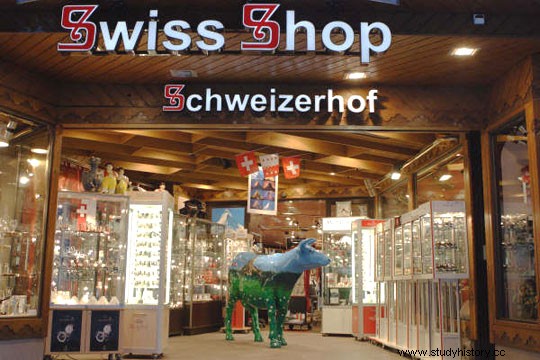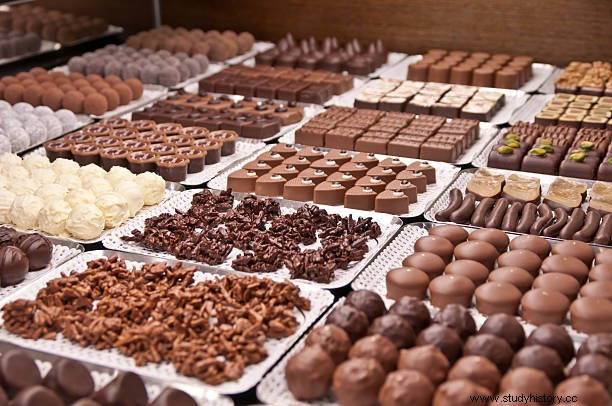Have you ever imagined why Swiss chocolate has become so popular? Well, your imagination is logical. Switzerland has emerged as a leading chocolate producer without having any cocoa plantation at home. In addition, the chocolate business around the world appeared more than 3,000 years ago when residents of South and Central America gathered around a fire. Furthermore, they made themselves happy and used to drink Zocotatl, a bitter and grainy drink.

Historical facts about Swiss chocolate
It can be noted that the Europeans in the 17th century had begun to sip chocolate drinks. Today, however, we enjoy various brands of Swiss chocolate to satisfy our sweet tooth's desires. But do you know who contributed to this world-famous delicacy? The contributions of a few notable entrepreneurs and confectioners cannot be ignored. After the First World War, there was a change of heart in the industrial work culture during the industrial revolution. Not only automation but also mass production paved the way for industrial sectors worldwide. Furthermore, services can be offered by all groups of people. Furthermore, the contribution of the pioneers should not be ignored.

pioneers
Francois Louis Cailler
In 1819, the world's first mechanized chocolate industry was built in Switzerland. That was the time President James Monroe ruled in the White House and Queen Victoria was just born. A former factory in Vevey, overlooking Lake Geneva, was turned into a chocolate-producing unit. Cailler introduced the first brand of Swiss Chocolates, which exists even now. Designated as the father of chocolate bars, Cailler underwent a four-year apprenticeship in Turin. After four years, he returned to his homeland. His experience as a chocolate apprentice enabled him to discover techniques for solidifying chocolate. However, Cailler's innovation was not without criticism. Especially the Italians who were unhappy and accused Callier of sticky fingers
Daniel peter
Fanny, Caillers' daughter, married a candlestick in 1863. But as increasing demand for oil lamps turned out to shift tea, it provoked Peter to make a career change in 1867. By this time he had become familiar with chocolate making techniques followed by his in-laws. He built a company in Vevey himself. But unfortunately, his business did not work well. Furthermore, Peter was vigilant to find a solution to his failure. Until he knows about Henri, a German immigrant, Peter's friend and neighbor. Furthermore, Henri was in the process of driving with milk powder. Peter came up with the idea of mixing his chocolate with milk powder and producing something innovative. But this time it was not worth it. But Peter did not stop the search until he collaborated with Henri. He used condensed milk. This time he succeeded. Peter's milk chocolate became a category of Swiss chocolate.
Henri Nestlé
Known for his brilliant entrepreneurship and knowledge of business, Henri has become one of the famous business tycoons today. He was born in Heinrich Nestle, located in Frankfurt. Furthermore, in 1839, he moved to Vevey in Switzerland. However, Henri did not personally engage in chocolate making. Furthermore, he helped companies that merged like those of Peter, Cailler and Charles Amedee Kohler. In 1929, when the merger was completed, Neste emerged as the largest of other food companies spread around the world. Henri was known for appreciating the innovations of Swiss chocolate companies. Milk sticks, white chocolate produced by the Nestle Company, were introduced in Europe in 1936.
Philippe Suchard
Phillippe used to help his brother at a young age run the confectionery shop around 1819. The shop was located in Bern. Furthermore, after seven years, he planned to start his own business. Philips established its own chocolate manufacturing company. He chose Serrieres, the canton of Neuchatel, to set up the company. Suchard himself was a proto-chocoholic. He felt that the chocolate produced during this period was grainy and grainy. He felt that chocolate needed to be made more tasty. Philippe invented the blender called Melangeur. The machine allowed fine mixing of cocoa powder and sugar grains into a paste. Suchard is known for producing about half a serving of Swiss chocolate. Because of Melange, he was the first person to produce chocolate outside the country. Swiss chocolate making was introduced in Germany in 1879, followed by Milka in 1901.
Charles-Amedee Kohler
In 1830, Kohler established his chocolate factory in Lucerne. Kohler was at the same time for Suchard. However, his penchant for creativity made him clear. Kohler's son trained his distant cousin Rudolf Lindt. He is recognized for inventing hazelnut chocolate. As well as chopsticks with chocolate.
Robert Lindt
As soon as he learned the business techniques from the Kohlers, Lindt returned to Bern. Almost immediately and set up his chocolate factory. He gave the world a wide variety of milk chocolate after four years. He invented the unique machine king who gave him a lot of fame. What was the conch? It is a machine that makes powerful blends of chocolate. The mixing takes place over a long period of time. Kt chocolate is aerated to remove turbidity and acidity. However, people have experienced a peculiar habit with Lindt. Every weekend he kept the machines on before closing the shop. Furthermore, on Monday when he returned, the stirrers would be left with lumps of burnt chocolate. The leftovers sparkled, but the smell was wonderful. Lindt liked the smell and went over to serendipity.
Jean Tobler
He was Lindt's first customer in Bern. Tobler, however, originally belonged to Appenzell Aussar Roden, who had built his chocolate shop in 1867. In this shop, Tobler used to sell goodies on behalf of others. Furthermore, in 1899, he set up his chocolate factory in the burning industry. Tobler's son Theodor joined the business. Together with his cousin Emil Thadmann, they innovated a product that made the family memorable. It was Toblerone, known among Swiss chocolates available worldwide.
Rudolf Sprungli
In 1970, Tobler merged with Suchard to build Interfood. Furthermore, there were many acquisitions in between. However, the conclusion is that both Toblerone and Milka are owned by Mondelez International, a US multinational company. But the most prominent was the merger of Lindt and Sprungli which took place in 1899. Not only the factory, but also the secrets of the conch were sold to Sprungli. Why the merger? Sprungli's father and grandfather, David, owned a shop with confectionery and cafes in Zurich. So Sprungli had an inherent knowledge of the chocolate business. In 1892, when Sprungli inherited the family, he wanted to change the way the business was run. He wanted to follow the same philosophy as Lindt in Burn.
Robert Lindt and Rudolf Sprungli Contribution to Swiss chocolate
Sprungli also tried to emulate Lindt in Bern, Zurich. However, he failed to copy the same. Furthermore, Sprungli bought the factory that belonged to Lindt. Beyond the secret information about Lindt's Cronch. The largest premium chocolate available worldwide is the mind of the Lindt and Sprungli association. Speaking German in Switzerland began because of Sprungli. The Golden Rabbit, introduced in 1892, was a joint contribution from Lindt and Sprungli.
Swiss Chocolates quality standard
- Switzerland is recognized as the first country to introduce chocolate. As part of the chocolate revolution, the pioneers have made a huge contribution to adding to today's list of delicacies. In the 19th century, many new chocolate products were added to the varieties we can see today.
The milk chocolate creates a perfect blend of milk and chocolate that was invented by Daniel Peter. In 1875, the last Swiss chocolate was introduced with the world-famous milk chocolate variety. Peter succeeded in inventing the mixing process after several attempts.
Melt-in-your-mouth chocolate is another variation that has resulted in the popularity of Switzerland's chocolate superiority. Greetings Rudolf Linte's innovation in 1879. Chocolate lovers have been exposed to tasting smooth chocolate.
- Chocolate produced in Switzerland is largely traditional. To keep up with the latest trends, they are constantly searching for development techniques. Furthermore, researchers have become involved in the search for new designs. Furthermore, the researchers share their findings with Professor Eric Windham. He works for the ETH Zurich Institute of Food, Nutrition and Health
- Swiss chocolate is usually known for its high quality standard. Not only the quality of raw materials, but also the methods used to produce them. Good quality chocolates do not give a true feeling after eating them. According to a quality chocolate standard, it is the taste associated with the smoothness of chocolate.
- People in Switzerland are chocolate experts. They need no suggestions from others. Furthermore, studies show that the Swiss are the biggest chocolate lovers in the world. Furthermore, the report also provides information that consumption per capita varies annually between 11 and 12. Furthermore, at the end of the 19th century, companies that produce chocolate began to advertise their best offers.

Cocoa used for Swiss chocolate
Cocoa is the main ingredient used in chocolate, and a tedious process is followed before the chocolate finally appears. The most productive cocoa producers are
- Ghana
- Indonesia
- Nigeria
- Cameroon
- Malaysia
The cocoa seeds grow in pods. It turns orange when ripe. The first step would be to collect them and pull out the pods. The bellies are like footballs in size. The second step would be to ferment the cocoa seeds. If the weather allows it, it will be better than if the seeds are soaked in sunlight. The process lasts for six or eight days until the seeds turn brown. As a third step, the seeds are cut into bags and transferred to producers.
About cocoa butter
Cocoa butter is a type of vegetable fat that forms an important ingredient in chocolate making. They are available in cocoa beans. Manufacturers ferment, dry, fry and extract creamy cocoa butter by pressing. Not only chocolate making, but cocoa butter has deep health values. The remaining cocoa pods are converted to cocoa powder.
Made of chocolate
When the cocoa beans arrive at the chocolate making station, they are stored in storage in the form of silos. Strict quality control standards are there before approval. The cocoa beans that arrive are checked to see if they are fermented, dried and healthy. In addition, the lab technicians also check for any damage during transport. Bad odor and pollution can damage the stock. The bearings are located separately and are monitored for correct storage conditions. Powerful vacuum cleaners suck the cocoa beans into the silos.
Procedure for making Swiss chocolate
- To start the process, cocoa beans need cleaning.
- After cleaning, the cocoa beans are exposed to frying
- After frying the peels of cocoa beans can be damaged. Therefore, shell removal will be necessary.
- Cocoa butter is an important ingredient. It must be refined and transformed into a butter-like paste.
- Cocoa beans are also processed to glue
- If milk chocolate is flavored, milk, sugar, cocoa and essence will be needed. They must be mixed to form an even mixture. Furthermore, rotating machine bowls and knee arms can deliver a homogeneous mixture. In particular, machines like Conches are quite efficient at mixing and painting. Remember that only low-fat milk is suitable for the purpose.
- The process of making chocolate is subjected to curing. This is the process by which the mixture is subjected to heating, cooling and heating. This is done to add texture, aroma and flavor for better results.
- The next step would be cast in different shapes. First of all, paint the surface of the molds with cocoa butter. Pour the hot mixture to take the mold. Let it dry.
- Finally, pack them to make the chocolate ready for consumers.
Few famous Swiss chocolates
At the end of the nineteenth century, many other varieties of chocolate were introduced. It became difficult to choose the best. However, traditional Swiss chocolate has created its platform for customers who are dedicated to trying their offerings. The age of the internet has allowed people to find their favorite Swiss chocolates. Some of them are
- The Lindt
- Cailler
- Most famous Toblerone
- Villars
- Traditional Frey
- Breakfast is treated with Ovomaltine
- Innovative Camille Bloch
Cultural significance in anthropology

Swiss chocolate is a loving delicacy that is preferred all over the world. It can serve as one of the favorite gifts one could wish for. It evolved as a chocolate revolution; several pioneers contributed enormously to the innovation of the renowned brands we can look forward to today. Industrial revolutionized production The traditional way to achieve the tasty shape of chocolate you can get today has been noted. The usefulness of conches can be noted. How the bitter drink of the past turns into sweet, aromatic, shiny and tasty food is a wonder. In the 21st century, many new chocolate products have emerged, but traditional chocolate is still top notch. Chocolate from Switzerland is a Wow for everyone. However, you have to make your own choice.
